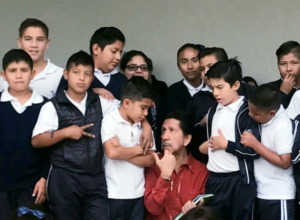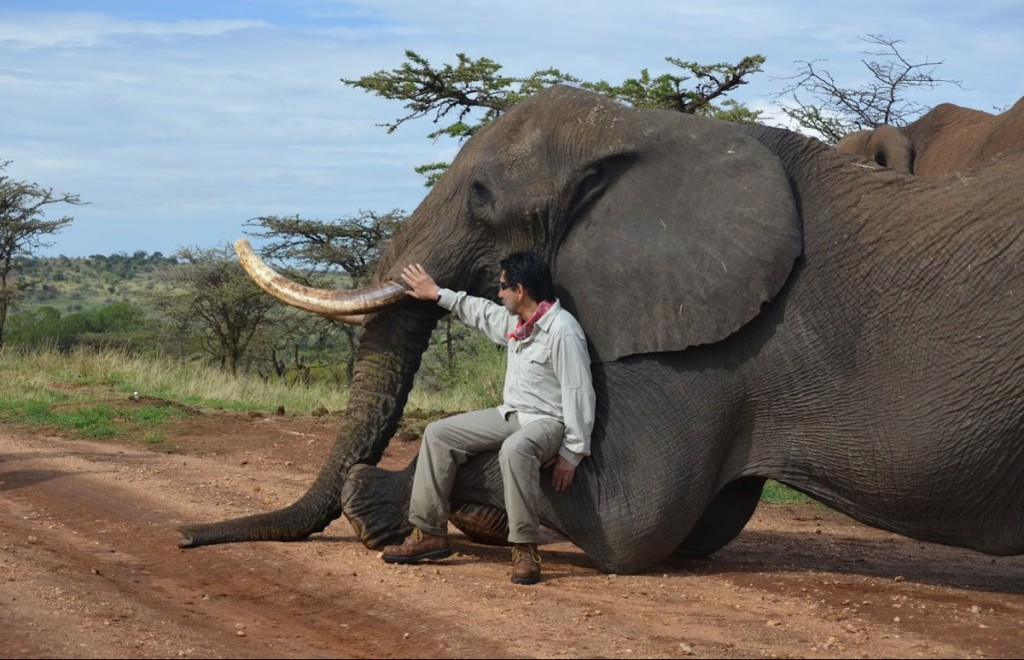
This National Hispanic Heritage Month, Sky Island Alliance celebrates the histories, traditions, and scientific contributions of Hispanic educators and scientists in the Sky Island region. Photo Credit: Rodolfo Dirzo
This month, Sky Island Alliance is celebrating National Hispanic Heritage Month.
National Hispanic Heritage Month has been observed in the United States since 1968. From September 15 to October 15 annually, the U.S. recognizes and highlights the unique histories, traditions, cultures, and work contributions of the American citizens who have come to the U.S. from Spain, Mexico, the Caribbean, Central America, or South America.
To help honor the incredible efforts and teachings of Hispanic educators and scientists, we want to spotlight the work of Dr. Rodolfo Dirzo, a conservationist and ecologist from Mexico who has spent years researching human-wildlife and wildlife-flora interactions across the globe.
“Rodolfo … is no doubt one of the greatest ecologists/biologists that Mexico has produced,” explains Paulo Quadri Barba, Sky Island Alliance’s Conservation Director. “His work is inspiring to many because he has made substantial contributions to our understanding of how species interactions shape ecosystems, and how humans are altering these interactions.”
Dirzo was born in Morelos, Mexico. He received his B.S. in Biology from the Universidad Nacional Autónoma de México (UNAM) in 1972. His M.S. (1977) and Ph.D. (1980), both in ecology, came from the University of Wales in the U.K.
During his schooling years, Dirzo studied tropical ecology—particularly tree characteristics to better understand how humans impact tree population dynamics. His post-graduation studies, while still in ecology, eventually shifted from human impacts to animal impacts on plants.
After graduating with his Ph.D., Dirzo returned to Mexico where he became a professor at the Instituto de Biologia in Veracruz. His career propelled him to directorship and then to professorship at UNAM, his alma mater.
In the mid-2000s, Dirzo moved to the U.S. to become a professor in Stanford University’s Biology Department, where he teaches ecology, natural history, and conservation science. Dirzo also holds a senior fellow position at the Woods Institute for the Environment.
In his most recent years, Dirzo has focused on understanding the relationship between mammals and defaunation and humans and defaunation. On his Stanford University page, he writes, “My interests are centered on the study of species interactions, trying to understand how the ecology and evolution of plants is affected by other living organisms, particularly animals (herbivores, pollinators, seed dispersal agents, and seed predators) and pathogens.”
 When not working on the development of various scientific studies, Dirzo also works with youth, especially in minority or underprivileged communities, to educate them about science and the environment. His impacts on ecology and the environment spread far across Mexico and the western United States.
When not working on the development of various scientific studies, Dirzo also works with youth, especially in minority or underprivileged communities, to educate them about science and the environment. His impacts on ecology and the environment spread far across Mexico and the western United States.
“Dirzo cares a lot about middle and high-school level education and has produced very important work on science education to kids and young people in local communities,” Quadri says of Dirzo’s excellent and ongoing student mentorship. “Mexican and American students have been producing really great research on species interactions and global environmental change in both countries, including things like the impacts of the border wall on species and ecosystem dynamics.”
Dirzo has been given several awards, including a Pew Scholar in Conservation (1992), a Medal of Honor in Science (2015), and a Miriam Arnold Rollan Prize for Volunteer Service from Stanford University (2016). Since the 1980s, he has been listed as an author on over 160 scientific papers.
In 2018, Dirzo contributed to a four-page viewpoint published in the journal BioScience. Titled “Nature Divided, Scientists United: US-Mexico Border Wall Threatens Biodiversity and Binational Conservation,” this paper addresses three ways in which the U.S. administration’s border wall—including the dozens of miles of wall under construction right now across the Huachuca and Patagonia Mountains—threatens the Sky Island region’s incredible biodiversity. Dirzo and 17 other co-authors were backed in this border wall response with the signatures of over 2,550 other scientists.
Here are a few takeaways from this paper:
- Eight waivers for U.S. border states have been issued since 2005, allowing construction on the border wall to proceed without going through the usually required processes in laws like the National Environmental Policy Act or the Endangered Species Act.
- Six ecoregions join the U.S. and Mexico. These include the Sonoran Desert and the Madrean Archipelago (where the Sky Island region is located). The border wall threatens to bisect and fracture the habitats found in these ecoregions, which will ultimately harm migratory wildlife species like black bears, Mexican gray wolves, jaguars, and Sonoran pronghorn. The paper suggests that “a continuous border wall could disconnect more than 34% of US nonflying native terrestrial and freshwater animal species from the 50% or more of their range that lies sound of the border” (source: BioScience, 2018).
- The 2,550+ signatories of the paper urge U.S. agencies, such as the Department of Homeland Security, to take action under the lens and leadership of science. For example, they suggest the DHS complete wildlife surveys, mitigate environmental harm during construction, and facilitate scientific research alongside Indigenous tribes, private landowners, and other stakeholders.

